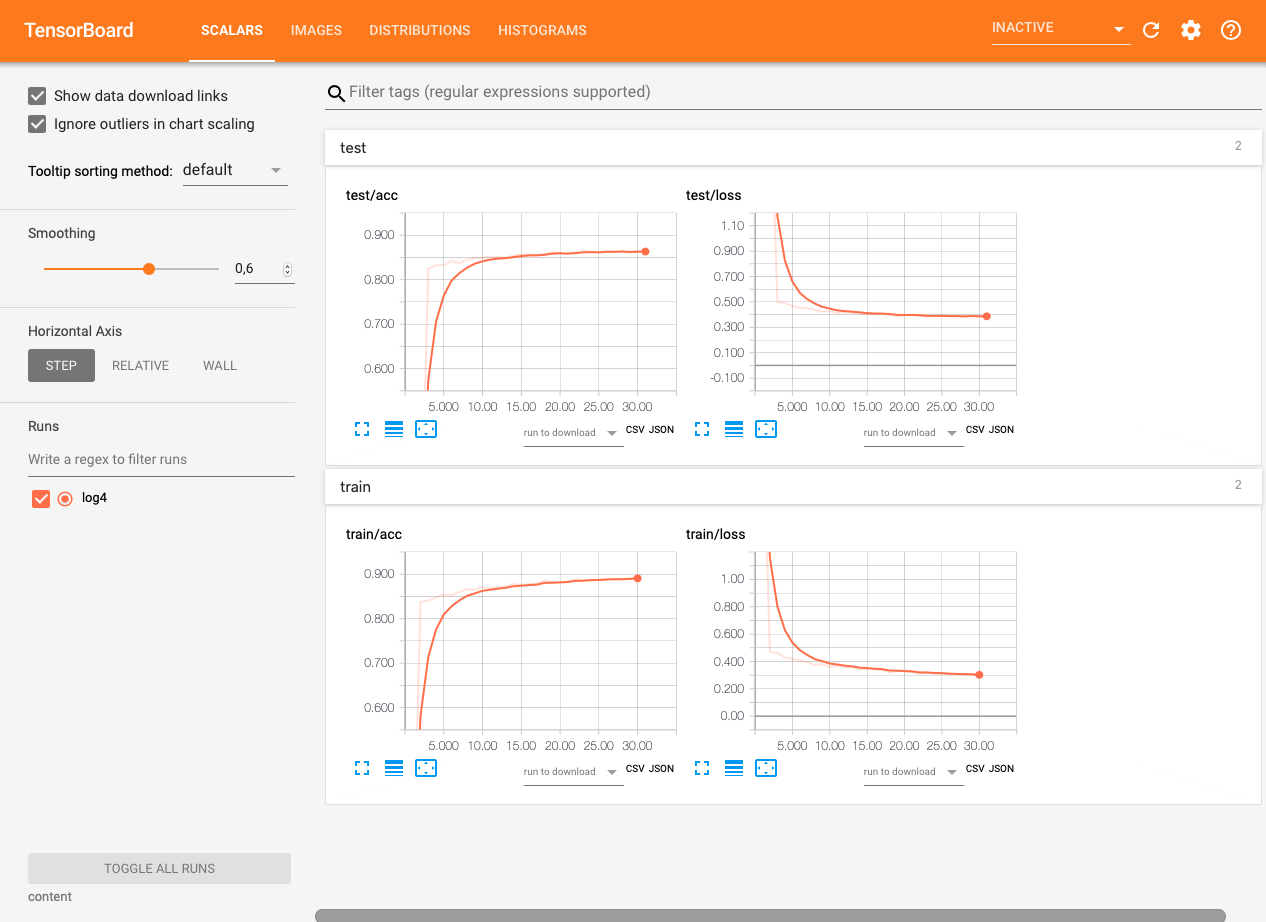Using TensorBoard with Flux
For a Google Colab version of this example, go here. The most important part of the example is the callback TBCallback which handles logging to TensorBoard.
This example necessitates a GPU and it will run for a couple of minutes. You could simplify it but... well. I'm lazy.
using TensorBoardLogger
using Flux
using Logging
using MLDatasets: FashionMNIST
using Statistics
using CuArrays
# Create tensorboard logger
logger = TBLogger("content/log", tb_overwrite)
# Load data
traindata, trainlabels = FashionMNIST.traindata();
testdata, testlabels = FashionMNIST.testdata();
trainsize = size(traindata, 3);
testsize = size(testdata, 3);
# Log some images as samples (not needed)
with_logger(logger) do
images = TBImage(traindata[:, :, 1:10], WHN)
@info "fmnist/samples" pics = images log_step_increment=0
end
# Create a FFNN model
model = Chain(
x -> reshape(x, :, size(x, 4)),
Dense(28^2, 32, relu),
Dense(32, 10),
softmax
)
loss(x, y) = Flux.crossentropy(model(x), y)
accuracy(x, y) = mean(Flux.onecold(model(x) |> cpu) .== Flux.onecold(y |> cpu))
opt = ADAM()
# Load the training data
traindata = permutedims(reshape(traindata, (28, 28, 60000, 1)), (1, 2, 4, 3));
testdata = permutedims(reshape(testdata, (28, 28, 10000, 1)), (1, 2, 4, 3));
trainlabels = Flux.onehotbatch(trainlabels, collect(0:9));
testlabels = Flux.onehotbatch(testlabels, collect(0:9));
# Function to get dictionary of model parameters
function fill_param_dict!(dict, m, prefix)
if m isa Chain
for (i, layer) in enumerate(m.layers)
fill_param_dict!(dict, layer, prefix*"layer_"*string(i)*"/"*string(layer)*"/")
end
else
for fieldname in fieldnames(typeof(m))
val = getfield(m, fieldname)
if val isa AbstractArray
val = vec(val)
end
dict[prefix*string(fieldname)] = val
end
end
end
# Callback to log information after every epoch
function TBCallback()
param_dict = Dict{String, Any}()
fill_param_dict!(param_dict, model, "")
with_logger(logger) do
@info "model" params=param_dict log_step_increment=0
@info "train" loss=loss(traindata, trainlabels) acc=accuracy(traindata, trainlabels) log_step_increment=0
@info "test" loss=loss(testdata, testlabels) acc=accuracy(testdata, testlabels)
end
end
# Create minibatches
minibatches = []
batchsize = 100
for i in range(1, stop = trainsize÷batchsize)
lbound = (i-1)*batchsize+1
ubound = min(trainsize, i*batchsize)
push!(minibatches, (traindata[:, :, :, lbound:ubound], trainlabels[:, lbound:ubound]))
end
# Move data and model to gpu
traindata = traindata |> gpu
testdata = testdata |> gpu
trainlabels = trainlabels |> gpu
testlabels = testlabels |> gpu
model = model |> gpu
minibatches = minibatches |> gpu
# Train
@Flux.epochs 15 Flux.train!(loss, params(model), minibatches, opt, cb = Flux.throttle(TBCallback, 5))The resulting TensorBoard interface will be:
tensorboard --logdir content
